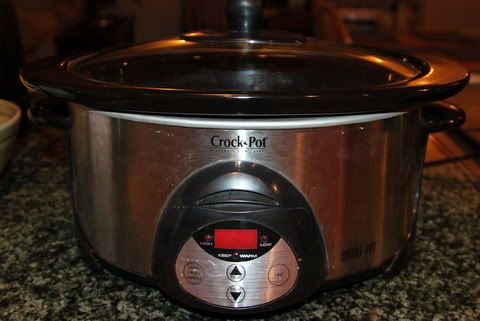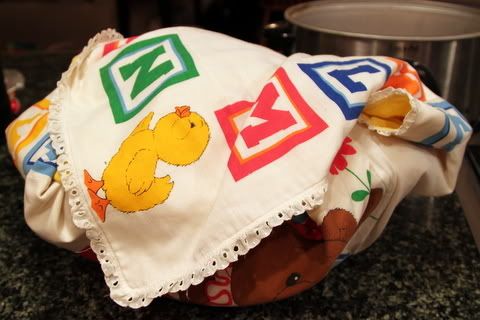
In the past month, four of my coworkers have joined the homemade yogurt revolution. Three have become converts. One continues to waver on the fence after several botched attempts. She plaintively asked what could be going wrong, as she sheepishly produced a Yoplait from her lunch bag. Upon further investigation, it turns out that she had strayed from the original formula and was heating the milk in a saucepan or in a rice cooker. Why? No jars, she said. Not even a single empty PB or spaghetti sauce jar languishing in the recycle bin? No. Well, never fear, here is a jar-free and foolproof way to make delicious yogurt at home with your trusty slow cooker.

Supplies:
a slow cooker
1/2 gallon of milk (2% or whole)
1/2 cup of yogurt starter (any plain yogurt with live, active cultures)
a beach towel or blanket
-----------------------------
Instructions:
Pour 1/2 gallon of milk in the slow cooker and place the lid on top
Turn on low for 2.5 hours
Turn off, leaving lid on for 3 hours. At this point, the milk should be roughly 90-110 deg F.
Gently stir in about a half cup of starter and replace lid
Wrap in a large beach towel or blanket for 6-12 hours, leaving undisturbed

Transfer to containers and chill in the fridge.
-----------------------------
That's it! Be sure to set aside half a cup to use as the starter for your next batch before digging in. The yogurt might seem a little soft at first, but after cooling in the fridge, should firm up a bit. If it's still too runny, you have the option of pouring it into a coffee-filter lined colander to drain some whey off. This yields thicker, almost Greek-style yogurt, but is messy and cumbersome. Or next time, I've heard you can add some dry milk powder in at the step when you mix in the starter, though I've never tried this.
This method is super easy and requires very little active time, but I prefer the jars method because it doesn't require scooping out and transferring the yogurt, which I think makes it runnier. The jars also allows for making different types of yogurt at the same time, like 2% for the grownups and whole milk for the baby. And you don't have to spend time transferring yogurt and then washing a big heavy slow cooker pot. Instead, if your baby is anything like our baby Anna was (see above), you can spend that extra time washing off the white hand of Saruman from your baby's hair after she digs into that delicious yogurt you just made.






